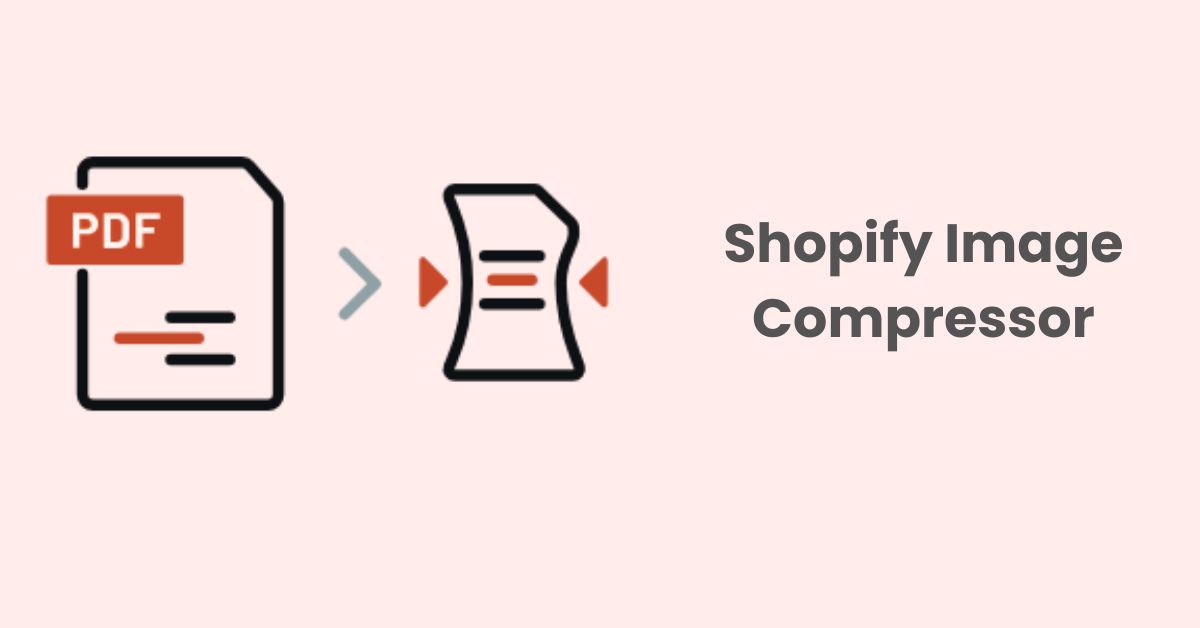Why Your SearchPie Keyword Campaigns Aren’t Ranking on Google
1. Choosing High-Competition Keywords
1.1. Definition of High-Competition Keywords:
High-competition keywords are popular search terms with lots of competition from other websites. These are typically shorter, more generic keywords that a lot of businesses want to target and rank for in search engines like Google (e.g., “shoes”, “car”, “iPhone”).
1.2. Challenges Posed by High-Competition Keywords:
Broad keywords get an extremely high search volume, but they are very competitive because so many websites are optimizing their content to rank for them. Achieving a high ranking on Google’s first page for a competitive keyword necessitates meticulous on-page optimization, strategic link-building, regular content updates, and a strong domain authority to signal credibility to search engines. In fact, these techniques require significant effort and resources to compete with established competitors in the search engine rankings.
For example, to get high rankings for competitive keywords and terms, you may need to generate exceptional and unique content that provides value to your audience and constantly update your website with fresh and relevant information because Google’s Algorithm changes frequently. Moreover, to improve your search engine ranking, you need to create quality backlinks to enhance your domain’s authority. Sometimes, these techniques might require SEO professionals, as they are considered to be too difficult for a newbie.
1.3. Alternative Strategy:
A long-tailed keyword is a very specific keyword phrase that consists of at least three words, making it easier to stand out in search engine results. Long-tail keywords are more specific than broad ones and often lead to better conversion rates by attracting highly targeted traffic. This implies that greater outcomes are typically obtained by both users and site owners. Brands will be able to more successfully attract new customers into the sales cycle thanks to traffic that is more closely linked with their content.
Meanwhile, high-competition broad keywords can drive massive traffic volume, but they are extremely difficult to rank on search engines due to competition. Targeting long-tail keywords can be an ideal strategy for merchants, especially those who are new to SEO and own small businesses. This strategy involves using longer, more specific keywords with less competition to help new websites reach their target audience, improve search engine rankings, and increase organic traffic. Not only long-tail keywords help websites avoid competition, but they also help merchants reduce optimization costs and establish more thorough and consistent topic coverage, allowing sites to conduct more comprehensive content.
Examples of long-tailed keywords:
- Trendy summer outfits for women
- Best hotel on Booking.com
- Iphone 16 release date
- Top 10 Vietnamese recipe for Asian food lovers
- Healthy habits for busy office workers
2. Inadequate SEO Optimization
Search Engine Optimization, or SEO, is well-known as cost-efficient and effective method to drive traffic to your website. It consists of many techniques and content practices to standardize your webpage, making it easy to be found, crawled, and indexed by the Google algorithm. Simply put, SEO involves enhancing your webpage’s structure and content to achieve higher rankings and reach more relevant searchers on search engines.
2.1. Keyword Research:
A comprehensive keyword plan is vital for your website’s success in search engine rankings, as it verifies if your targeted keywords truly match your audience’s search intent on the Internet. Furthermore, those keywords have to be strategically aligned with your overall content strategy throughout your website to avoid misleading and misalignment, leading to critical failure in converting prospective customers.
Each search query on search engines reflects the intentions and interests of customers. It is critical to analyze these intents to drive more traffic and boost conversions on your site. During the research of your keyword plan, analyze the current positions and traffic volume of each keyword to determine:
- Informational Intent: Does the content provide relevant answers to informational questions?
- Commercial/Investigational Intent: Does the information provided satisfy customers’ intentions in researching and purchasing products?
- Transactional Intent: Does the content offer a smooth customer journey map in terms of purchasing products?
By matching keywords with accurate underlying content, you can revise your content strategy and optimize it toward delivering more satisfying user experiences.
Steps to Use Keyword Audit in SearchPie App:
- Access Keyword Audit: Locate the “Keyword Audit” feature on the Search PI app sidebar.
- Enter Page URL and Keyword:
- Provide the URL of the webpage you want to audit.
- Enter the specific keyword you want to check for.
- Run Audit: Click the “check” button to initiate the keyword audit.
- View Audit Results: The app will analyze the webpage in a few seconds and display the results.
- If the chosen keyword is present in important tags (title, meta description, etc.) of your webpage, the results will likely be positive.
- If the keyword is missing, the app will indicate this.
- Fix Missing Keyword (Optional):
- If the audit reveals a missing keyword, click the “fix all” button.
- This will likely redirect you to the “Manual Meta Tags” feature within the app, allowing you to directly add the missing keyword to your webpage’s meta tags.
2.2. Page SEO Audit:
Page SEO, or On-page SEO, is the process of optimizing various front-end and back-end components of your website so that it ranks in search engines and brings in new traffic. On-page SEO optimization includes auditing Meta tags, HTML tags, Image tags, links, and content quality.
Title Tags and Meta Descriptions are two key components of On-page SEO. While Title Tags tell both visitors and search engines what they can find on the corresponding pages, Meta Description is not an official ranking factor for search engines, but it still can influence whether or not your page is clicked on; therefore, it’s just as important when doing on-page SEO.
How to audit your Meta Tags and ALT Tags issues with SearchPie:
Access Bulk Meta Tags: Locate the “Bulk Meta Tags” feature on the Search PI app sidebar.
Choose Template Option:
- Use Suggested Template: Click the “let the app decide” button.
- Create Your Own Template: Create your desired meta tag template and click “save.”
- Upload CSV File (Advanced): Upload a CSV file containing your meta tags and follow the app’s instructions for applying them to specific page groups
- Click Save
Note: Apply the same steps to ALT Tags issues.
2.3. Schema and Snippets:
In the context of SEO, both Schema and Snippets play crucial roles in helping search engines understand and analyze information from websites.
The schema markup helps search engines grasp content context and meaning. Specifically, schema markup improves a web page’s structured data, making it easier for search engines to understand and display content by being inserted directly into a web page’s HTML code using Schema.org’s tags and properties, a collaborative project endorsed by major search engines. Schema markup is used to enhance the structured data of a web page, making it easier for search engines to interpret and display content in a more informative way.
Rich Snippets refers to the brief summary or preview of a web page’s content that is displayed in search engine results pages (SERPs). It typically includes the page title, meta description, and URL. Snippets serve as the first impression of a web page in search results. In addition, rich snippets deliver structured data and helps search engines generate more informative and visually appealing search listings that include additional details, like star ratings, publication dates, event information, and more.
Steps to Integrate Rich Snippets in SearchPie:
- Access Schema and Snippets: Locate the “Schema and Snippets” feature on the Search PI app sidebar.
- Enable Desired Snippets: Each button represents a Rich Snippet. Simply click on the button to enable that specific snippet for your website.
- Provide Additional Information (Optional): Some advanced snippets may require additional information. Click the arrow button to the right of the snippet name to learn more and potentially fill in any required details.
2.4. Speed Optimization:
In today’s competitive landscape, even a slight delay can affect your site’s bounce rate and cost you prospective customers. Therefore, it is essential to consider boosting your webpage’s loading speed as a strategy to improve customers experiences while surfing your website.
Compressing images:
Large and uncompressed images are the main factors leading to slow loading time for webpages. After compressing images, website loading time can be significantly reduced, resulting in a better user experience and potentially higher conversion rates. This is also especially beneficial for users on metered/capped mobile data plans by reducing their data transfer volumes when visiting the site. You can consider using SearchPie’s Image Compress feature to save more time optimizing your website’s images.
Steps to Compress Images in SearchPie App:
- Locate Image Compression Feature: Find the “Image Compression” feature on the Search PI app sidebar.
- Compress Images: Click the “Optimize Now” button. The app will automatically compress your images.
- View Compression Report: The app will notify you when the process is complete and provide a report on:
- Compressed images.
- Memory space saved due to compression.
- Revert Single Image (Optional): Click the “restore” button next to a specific image in the report to return it to its original state.
Enabling caching:
Enabling browser caching allows static assets like CSS, JavaScript, fonts, and images to be temporarily stored in the user’s browser cache. As a result, returning visitors don’t need to re-download all page elements every time, leading to quicker load times and an improved user experience.
3. Actionable Recommendations
3.1. Keyword Strategy:
As mentioned above, a thorough keyword plan is an essential step for any successful SEO campaign. In fact, it helps identify the most relevant terms and keywords that your target audiences use to search for products or services that you offer and also compares the competitiveness within the industry. To see the full picture of the keyword competition, you have to use keyword research tools and analytics.
Popular keyword research tools like Ahrefs, SEMrush, Google Keyword Planner, and SearchPie Keyword Explore provide valuable insights into the competition for specific keywords. Popular keyword research tools like Ahrefs, SEMrush, Google Keyword Planner, and SearchPie Keyword Explore provide valuable insights into the competition for specific keywords. If you’re unsure which tool suits your business best, a detailed comparison of Ahrefs vs SEMrush – may help clarify key differences in features, pricing, and usability. Specifically, these tools can help you determine which keywords are worth targeting based on search volume, competition level, and potential traffic. By utilizing these resources, you can make informed decisions on which keywords to prioritize in your SEO strategy.
Diversify keywords by targeting long-tail opportunities.
- Analyze common terms for your site in the Google Search Console to understand how users are finding it and where there may be room for improvement.
- Use keyword research tools such as SearchPie’s Keyword Explorer to discover niche long-tail keyword ideas and filter low competition with high search intent. Ultimately, this approach improves your website’s visibility in search engine results pages.
- Competitor Analysis See what long-tail opportunities competitors are targeting that you may be missing using tools and manual searches.
How to use SearchPie’s Keyword Research Tool?
1: Click on SEO Tags & Contents on your SearchPie’s menu bar.
2: Click on Keyword Research and choose Keyword Explorer.
3: Enter the keywords you wish to research and analyze the displayed results.
4: Analyze and choose the keywords displayed to improve your SEO strategy.
3.2. SEO Audit and Plan:
While metrics illustrate whether your marketing campaigns are successful or not, they don’t always point out where your current problems and advantages are, especially when it comes to Search Engine Optimization. Therefore, to truly understand and identify your SEO issues, SearchPie’s SEO report is an essential tool to help you analyze your web page’s current problems and give you multiple options to fix them.
By performing an in-depth SEO audit with SearchPie, you can:
3.1. Detect technical issues:
- Every day, SearchPie gives you an updated SEO report to diagnose technical problems such as Meta Tags issues, broken links, and Long URLs and suggests how to fix them in bulk. With just one click, you can fix multiple issues at the same time, saving your efforts on auditing your web pages.
- Furthermore, besides SEO friendliness, Google Algorithm also prioritizes webpages with high loading speed on its search results. Therefore, alongside helping you diagnose technical issues, this app also reports on your site’s speed performance and offers solutions for speed boosting by optimizing AMPs and instant pages, as well as compressing your site’s images to the proper size.
3.2. Evaluate On-page Optimization:
- Assess Meta Titles, Meta Descriptions, URL lengths, image tags, heading tags, favicons, and Google Snippets to provide search engine context about your pages and content.
- Check for high-quality, informative content that caters to your target audience’s search intent.
- Analyze your content for relevant keywords and ensure proper keyword density throughout your web pages.
3.3. Diagnose Backlink profile:
- Backlinks are essentially links from other websites pointing to yours. They act as votes of confidence for search engines, influencing your website’s authority and ranking.
- The audit can identify the quantity and quality of backlinks you have. Ideally, you want backlinks from reputable websites relevant to your niche.
- Identify and disavow any spammy or low-quality backlinks as they can harm your website’s SEO by diminishing its credibility and authority in the eyes of search engines.
3.4. Develop a step-by-step optimization plan:
An SEO audit exposes your website’s strengths and weaknesses. Here’s how to turn that info into an actionable plan:
- Prioritize ruthlessly. Fix critical issues like mobile-friendliness first. Focus on high-impact fixes that won’t take forever.
- Timeline is key. Set realistic deadlines for each task. Break big jobs into smaller, achievable steps.
- Take action!
- Technical SEO: Address crawl errors, speed issues, and mobile-friendliness.
- On-Page SEO: Optimize titles, descriptions & content using relevant keywords.
- Backlinks: Build high-quality backlinks from relevant websites. Disavow spammy ones.
- Track and adapt. Monitor website traffic and SEO metrics. Be prepared to adjust your plan based on results and algorithm updates.
- Continuous improvement. Stay updated on SEO trends and conduct regular audits to maintain a strong search engine presence.
Conclusion:
In conclusion, various factors, including keyword relevance, content quality, backlink profile, and user experience, impact your keyword campaign rankings on Google. Regularly reviewing and optimizing your SEO strategy is crucial to remain competitive in the constantly changing digital environment. By focusing on technical, on-page, and off-page SEO tactics, you can improve your website’s visibility and drive more organic traffic to your site. To start your SEO optimization journey with ease, install SearchPie now!





